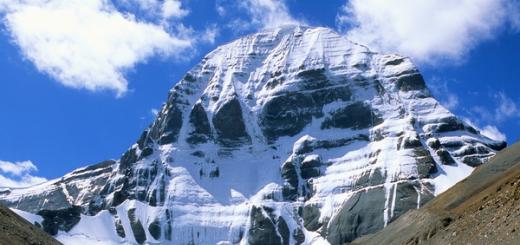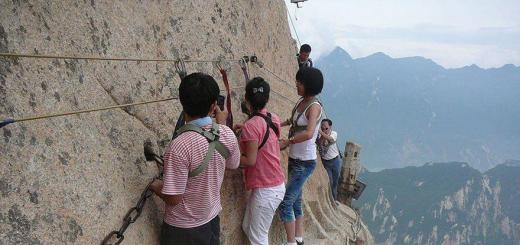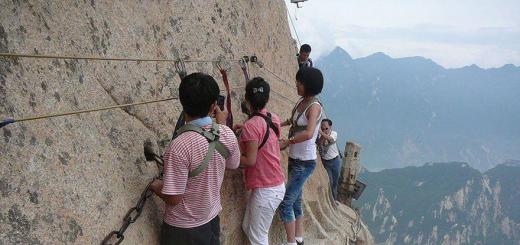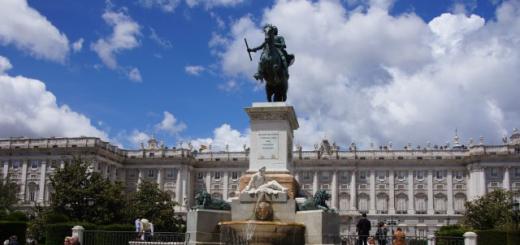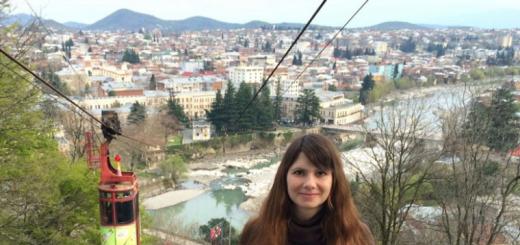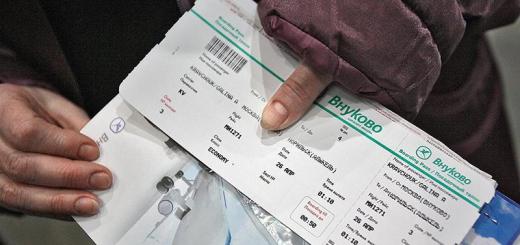Of particular importance were the achievements of Russian scientists in the field of geographical research.Russian travelerswe visited such places where the European foot had not argued. In the second half XIX B.. Their efforts were focused on the study of the deep districts of Asia.
The start of expeditions to the depths of Asia was laid Peter Petrovich Semenov-Tian-Shansky (1827-1914), geographer, statistical, nerd. He made a number of travels to the mountains of Central Asia, on Tien Shan. Heading the Russian Geographical Society, he began to play a leading role in developing plans for new expeditions.
Activities and other activities were connected with the Russian geographic society russian travelers - P. A. Kropotkin and N. M. Przhevalsky.
P. A. Kropotkin In 1864-1866, he traveled through Northern Manchuria, Sayanam and Vitimsky plateau.
Nikolai Mikhailovich Przhevalsky (1839-1888)the first expedition was performed on the Ussuri region, then his paths flew through the most difficult areas of Central Asia. He crossed Mongolia several times, North China, explored the Gobi Desert, Tien Shan, visited Tibet. He died on his way, at the beginning of his last expedition. In connection with the news about his death A. P. Chekhov wrote that such " fakes are needed like the sun». « By compiling the most poetic and cheerful element of society, he added, - they excite, comfort and add ... If the positive types created by the literary work make up a valuable educational material, then the same types given by samot life, stand out of stock».

 Zaokan traveling Russians Scientists in the second half of the XIX in. acquired more focused. If they were mainly limited to the description and application on the coastline map, then the life, culture, customs of local peoples were now studied. This direction, the beginning of which in the XVIII century. put S. P. Krasheninnikov, it was continued Nikolai Nikolayevich Miklukho-Maclay (1846-1888). He made his first journeys on Canary Islands And in North Africa. In the early 70s, he visited a number of islands. Pacific Ocean, studied the life of local peoples. 16 months he lived among Papuans on the northeast coast of New Guinea (this place since then is called the shore of Maclay). Russian scientist won the confidence and love of local residents. Then he traveled through the Philippines, Indonesia, Malacca, returned to " shore Maclay" Described by scientists, the descriptions of life and morals, the economy and culture of the peoples of Oceania in a large part were published only after his death.
Zaokan traveling Russians Scientists in the second half of the XIX in. acquired more focused. If they were mainly limited to the description and application on the coastline map, then the life, culture, customs of local peoples were now studied. This direction, the beginning of which in the XVIII century. put S. P. Krasheninnikov, it was continued Nikolai Nikolayevich Miklukho-Maclay (1846-1888). He made his first journeys on Canary Islands And in North Africa. In the early 70s, he visited a number of islands. Pacific Ocean, studied the life of local peoples. 16 months he lived among Papuans on the northeast coast of New Guinea (this place since then is called the shore of Maclay). Russian scientist won the confidence and love of local residents. Then he traveled through the Philippines, Indonesia, Malacca, returned to " shore Maclay" Described by scientists, the descriptions of life and morals, the economy and culture of the peoples of Oceania in a large part were published only after his death.
The world geographic science in those years relied in many ways to achieve Russian researchers. By the end of the XIX century. EPA completed geographic discoveries . And only Ice expanses of the Arctic and Antarctic still kept many of their secrets. The heroic epic of the latest geographical discoveries, the active participation in which the Russian researchers adopted, falls at the beginning of the XX century.
Who: Semen Dejnev, Cossack Ataman, merchant, merchant furs.
When: 1648
What opened: The first passed Bering Strait, which separates Eurasia from North America.
Thus, I found out that Eurasia and North America - two different continentsand that they do not climb.
Who: Fadda Bellinshausen, Russian Admiral, navigator.
Travels
When: 1820.
What opened: Antarctica, together with Mikhail Lazarev on the frigates "Vostok" and "Mirny."
Commanded "East". Prior to the expedition of Lazarev and Bellinshausen about the existence of this mainland was nothing unknown.
Also, the expedition of Bellinshausen and Lazarev finally dispelled the myth of the existence of the mythical "southern mainland", which was mistakenly applied to all medieval European maps.
Navigators, including the famous captain of James Cook, were looking for in Indian Ocean This "Southern Mainland" is more than three hundred fifty years, and of course they did not find anything.
Who: Camera Ivan, Cossack and Hunter for the Solutions.
When: 1650s.
What opened: Filters Kamchatka, named in his honor.
Who: Semyon Chelyuskin, Polarnik, Officer of the Russian Fleet
When: 1742
What opened: The Northern Cape Eurasia, named after Cape Chelyuskin.
Who: Yermak Timofeevich, Cossack Ataman in the service of the Russian king. Surname Ermak is unknown. Perhaps Tokmak.
When: 1581-1585
What opened: I won and explored Siberia for the Russian state. To do this, entered into a successful armed struggle with the Tatar Khans in Siberia.
Ivan Kruzenshtern, Officer of the Russian Fleet, Admiral
When: 1803-1806.
What opened: Made the first of the Russian navigators trip around the world Together with Yuri Lisyansky at the "Nadezhda" and "Neva" gateways. Commanded "Hope"
Who: Yuri Lisya, Officer of the Russian Fleet, Captain
When: 1803-1806.
What opened: Made the first on-the-world swimming along Russian navigators around the Russian navigators together with Ivan Kruzenchtern on the gateways "Nadezhda" and "Neva". Commanded the "Neva".
Who: Peter Semenov-Tian-Shan
When: 1856-57
What opened: The first of the Europeans explored Tien Shan Mountains.
Also later studied a number of regions in Central Asia. For the study of the mining system and merit in front of science, from the authorities of the Russian Empire, the honorary name Tian-Shansky, which was the right to transfer and inherited.
Who: Vitus Bering
When: 1727-29
What opened: The second (after the Seeds of Dezhneva) and the first of the scientists of the researchers reached North America, having passed through the Bering Strait, thereby confirmed its existence. Reaffirmed that North America and Eurasia are two different continents.
Who: Khabarov Yerofey, Cossack, Ferry Merchant
When: 1649-53
What opened: He mastered the Russian part of Siberia and the Far East, he studied the land near the Amur River.
Who: Mikhail Lazarev, Russian Fleet Officer.
When: 1820
What opened: Antarctica, together with Faddeem Bellingsgausen, on the frigates "East" and "Mirny".
Commanded "peaceful". Prior to the expedition of Lazarev and Bellinshausen about the existence of this mainland was nothing unknown. Also, the Russian expedition finally dispelled the myth on the existence of the mythical "southern mainland", which was applied to medieval European maps, and who was unsuccessful looking for the seaflors of four hundred years in a row.
Of particular importance were the achievements of Russian scientists in the field of geographical research. Russian travelers visited such places where the European foot has not argued. In the second half XIX B.. Their efforts were focused on the study of the deep districts of Asia.
The start of expeditions to the depths of Asia was laid Peter Petrovich Semenov-Tian-Shansky (1827-1914), geographer, statistical, nerd.
He made a number of travels to the mountains of Central Asia, on Tien Shan. Heading the Russian Geographical Society, he began to play a leading role in developing plans for new expeditions.
Activities and other activities were connected with the Russian geographic society russian travelers - P.
A. Kropotkin and N. M. Przhevalsky.
P. A. Kropotkin In 1864-1866, he traveled through Northern Manchuria, Sayanam and Vitimsky plateau.
Nikolai Mikhailovich Przhevalsky (1839-1888)the first expedition was performed on the Ussuri region, then his paths flew through the most difficult areas of Central Asia.
He crossed Mongolia several times, North China, explored the Gobi Desert, Tien Shan, visited Tibet. He died in the way, at the beginning of his last expedition. In connection with the news about his death, A. P. Chekhov wrote that such "devotees are needed as the sun." "Composing the most poetic and cheerful element of society, he added," they excite them, comfort and add ...
Russian travelers of the 19th century (briefly)
If the positive types created by the literary work make up a valuable educational material, then the same types given by samo life, stand out of stock. "

 Zaokan traveling Russians Scientists in the second half of the XIX in.
Zaokan traveling Russians Scientists in the second half of the XIX in.
acquired more focused. If they were mainly limited to the description and application on the coastline map, then the life, culture, customs of local peoples were now studied. This direction, the beginning of which in the XVIII century. put S. P. Krasheninnikov, it was continued Nikolai Nikolayevich Miklukho-Maclay (1846-1888).
He made her first journey to the Canary Islands and in North Africa. At the beginning of the 70s, he visited a number of Pacific Islands, studied the life of local peoples. 16 months he lived among Papuans on the northeast coast of New Guinea (this place since then is called the shore of Maclay).
Russian scientist won the confidence and love of local residents. Then he traveled through the Philippines, Indonesia, Malacca, returned to the "Shore of Maclay" again. Described by scientists, the descriptions of life and morals, the economy and culture of the peoples of Oceania in a large part were published only after his death.
The world geographic science in those years relied in many ways to achieve Russian researchers.
By the end of the XIX century. The era of geographical discoveries ended. And only Ice expanses of the Arctic and Antarctic still kept many of their secrets. The heroic epic of the latest geographical discoveries, the active participation in which the Russian researchers adopted, falls at the beginning of the XX century.
§ the first Russian Marxist V.
Plekhanov
§Nocolno revolutionary activities of Lenin
§ Internal reign of Alexander I
§Start Patriotic War 1812
§Found of the Patriotic War 1812
Open lesson. For grade 8. Education and science in the 19th century.
Russian discovers and travelers.
At the very beginning of the 19th century, a system of higher, secondary and primary education has developed in Russia. The reform in the field of education conducted in 1803 led to the creation in each provincial city of gymnasium. In each county town county school. The Ministry of Folk Enlightenment was created to manage educational institutions. Government paid great attention to the development of higher education.
1. The universities and the dates of their education.
Derptsky 1802g
Kazan 1804
Kharkov 1804.
Vilensky 1804
Petersburg 1819
Alexandrovsky (Tsarskoselsky) Lyceum 1811
In which representatives of the Higher Nobility Society (A.S. Pushkin) were trained.
2. Fill in the table. Educational institutions under Nikolai 1.
Who and what was taught.
Parish schools
Representatives of the bottom. The law of God, diploma, arithmetic.
County schools
Children of merchants, artisans, burghers. Russian language arithmetic, geometry, history, geography.
Gymnasium
Children of the nobility, officials, merchants of the first guild. We studied accurate and humanitarian items.
3. Specify a bookbook, whose books contributed to the development of education in the 40s. 19th century?
A. Satent I.D.
B. Sirdin A.F.
V. Soldatenkov K.T.
Pavlenkov F. F.
4. Fill the table.
Improving the education system in many ways contributed to the development of domestic science.
Branch of science
opening
biology
Dvigubsky I.A.
The earth's surface and inhabiting its creatures over time under the action of natural causes are undergoing indigenous changes.
Dyadkovsky I.E.
Life is a continuous physicochemical process.
Bar K.M. 1834
Universal Law Development of Nature.
medicine
Pirogov N.I.1856.
The founder of military field surgery first used anesthesia.
geology
N.I. Kokshars 1840.
A geological map of European Russia was compiled.
Astronomy
Creating powerful telescopes. Pulkovo observatory
mathematics
Lobachevsky N.I. 1826
Neevklidova geometry.
Petrov V.V.1802.
Developed a galvanic battery. Difficult light bulb.
Lenz E.H. 1833.
Rule direction of driving force induction. A year later invented the electric motor.
Jacobi B.S. 1840
Halvonoplasty-method of applying metal on the desired surface with electricity .. The letterpress device for Telegraph.1850g
Schilling pl.1832g
Invented electric telegraph.
Guess the crossword. Chemistry, science and production. Taking advantage of the textbook on page 105-106
1. In 1826-27, one of these researchers laid the beginning of powder metallurgy.
2. This researcher opened the basic law of photochemistry.
3. 6. In the 1930s of the 19th century, these brothers are the fortress mechanics of the Nizhnyagilsky Metallurgical Plant built the first steam railway.
4. In 1840, this scientist opened the main law of thermochemistry.
5. In 1817, this outstanding metallurgist developed four variants of bouquet steel technology.
6. Chemistry researcher has developed a method for producing glucose.
7. One of these chemists created sustainable chemical dyes for the rapidly developing textile industry.
Distinctive features of the development of education and science in the first half of the 19th century were: an increase in the number of higher and secondary educational institutions and representatives of various layers of the country's population and students in them; the increase in the number of scientists; The major successes achieved on this basis in the development of domestic and world science; strengthening the practical focus of scientific research; Strengthening bonds of science with industrial production
6. Russian discover and travelers.
The 19th century became the time of the largest geographical discoveries committed by Russian researchers. Continuing the traditions of their predecessors-landlords and travelers in the 17-18 centuries, they enriched the representation of Russians about the environment, contributed to the development of new territories included in the empire. Russia first realized soy long dream: Her ships came to the world ocean.
Working with the text insert missed words.
1.Rerrusenshtern I.F. and Lissean Yu.F.
In 1803, at the direction of Alexander 1, an expedition was made on the ships "Nadezhda" and "Neva" for the study of the northern part of the Pacific. It was the first Russian expedition, which lasted three years. She was headed by Ivan Fedorovich Kruzenshtern-a largest navigator and a 19th century scientist.
During the swim, it was first applied to a map of more than a thousand kilometers of the shores of Sakhalin Island. Yu.F. Lisyansky discovered one of the islands of the Hawaiian archipelago, called him name. A lot of data was collected by the participants of the expedition about the Aleutian Islands and Alaska. Islands of the Pacific and Ice Oceans.
The results of the observations were set forth in the report of the Academy of Sciences. Kruzenshtern I.F was awarded the title of academician. His materials were based on a published at the beginning of the 20s "Atlas Southern Moreley." In 1845, Admiral Kruzenshtern I.F became one of the founders of the Russian geographical society.
Work with a map. Relate information to the task.
2. Bellingsgausen F.F. and Lazarev M.P.
One of the students and followers of Kruzhenstern became Fadeevich Bellingshausen. He was a member of the first Russian round-the-world expedition.
In 1819-1821, Bellinshausen was instructed to head the new round-the-world expedition at the East and Mirny gateways. The plan of the expedition was Kruzenshtern I.F. The main goal was marked "the acquisition of the utmost knowledge of our globe"And" Opening of the possible proximity of the Antarctic Pole. "
On January 16, 1820, the expedition approached the shores of the unknown at that time Antarctica, which Bellinshausen called "Ilicate Mother". After the parking lot in Australia, the Russian ships moved to the tropical part of the Pacific Ocean, where they were opened by a group of islands called the Russians of Russians.
For 751 day of swimming, Russian sailors passed about 50 thousand km. The most important geographical discoveries were made, valuable collections were brought. These observations of the waters of the oceans and the icy coatings are new to the continent for humanity.
Teaching report. Turn the missed words.
3. Banov A.A. And the development of Russian America.
Alexander Alexandrovich Baranova is difficult to attribute to the discoverers or travelers in the strict sense of the word. But it was a person who made an invaluable contribution to the development of Russian America's substitre.
In search of new areas of the hunt of the rams, the island of Kodiak and other territories, kept searching for minerals, founded new Russian settlements and supplied them with everything necessary. Implemented Exchange S. local residents. It was he who was for the first time to consolidate the extensive territories in the Pacific Coast of North America for the first time. Baranov's activity was extremely difficult and dangerous. Permanent raids of the Indians were worth the Russian settlers not only considerable money, but also lives. Only in 1802, when attempting to create a settlement on the island of Sitka, more than 200 settlers were killed.
The efforts of Baranov were so successful that in 1799 he became the ruler of the Russian-American company, and 1803 was appointed ruler of Russian colonies in America. In 1804, the Baranov on the island of Sitka founded the fortress of Novoarhangelsk, and then Fort Ross. In 1825, he undertook an expedition to Hawaiian Islands In order to access them to Russia. However, good luck did not bring. In 1818, he received consent to departures from America to his homeland. On the road, on the island of Java, Baranov died in 1819.
Work with a map. Relate information to the task
4. Nevelsky G.I. And E.V. Putyatin.
Gennady Ivanovich Nevelovskaya became the largest researcher of the Russian Far East of the mid-19th century.
In two expeditions (1848-1849 and 1850-1855), he managed by Sakhalin from the north, to open a number of new, unknown territories and enter the lowerland of Amur. Here in 1850 he founded the Nikolaev post (Nikolaevsk-on-Amur). Traveling Nevelsky was important: for the first time it was proved that Sakhalin was not connected with the mainland at all. And is the island and the Tatar strait, exactly the shed, and not the bay, as thought.
Efimiy Vasilyevich Putyatin in 1822-1825. Made a world journey and left the descendants description seen. In 1852-1855. During the expedition led by the Fregate "Pallada", the islands of Rimsky-Kororsakov were opened. Putyatin became the first of the Russians who managed to visit Japan closed from Europeans and even sign a contract in 1855.
The result of the expeditions of Nevelsky and Putyatina, except for purely scientific, was the consolidation of Russia of the Primorsk region in the Far East.
The scientific information collected by Russian travelers was so extensive and significant that it took the creation of special institutions for their generalization and use.
The most important of them was the Russian Geographical Society opened in 1845. It turned into a center of geographic knowledge in Russia. Regularly became the organization of scientific expeditions. Conducting research of the population of Russia and neighboring countries. Edition of geographical and statistical collections. For the development of economic and geographical research of Siberia, the Far East, the Caucasus, Transcaucasia and Central Asia in 1851, the Caucasian and Siberian departments of the Russian Geographical Society were created.
8. Master the task of paragraphs 15. 16.
Thanks to them on the map of the Pacific Ocean, Russian names appeared, Persia was studied, and Ethiopia remained an independent country - one of the few in Africa of that time ...
We continue to publish stories about Russian pioneers, quite a few for the world, but undeservedly forgotten contemporaries and descendants. The first part is, the second part is. In the 19th century, travel, even around the world, have become relatively comfortable, but there still remained many white spots on the world map, and our heroes, each in their own way, expanded him geographical borders.
Otto Cotceb. 399 islands in the Pacific Ocean. 1815-1818.
For his life, Otto Coteber made three rounds. First - at the age of 15. As a UNGI, he participated in the first Russian round-world swimming (1803-1806) at the Nadezhda Slut under the command of Krusenstern. Third - in 1823-1826 as a captain of the company "Enterprise".
One day, when Pashino noticed that he was suspected, he changed his clothes with his servor's servant and stayed in the same chalme and a loined bandage. Yes, and put out the dose of the litter to give her skin a dark color
But the most significant in his biography was the command of Rurik Brig, who made a world tour in 1815-1818. The purpose of this expedition was to find the northern passage from the quiet in Atlantic Ocean. During the storm at Cape Mountain Kotseb, almost washed away overboard. He miraculously managed to grasp the stretched cable. And during the storm in the Pacific Ocean, the vessel broke a bushprit, which cried several sailors and the Kotseb itself. Because of this, the ultimate goal of the expedition was not achieved. But her results still turned out to be shiny. It is thanks to the Kotseb on the map of the Pacific Ocean, Russian names appeared: the Atolla Rumyantsev, Kruzhenstern, Kutuzov, Suvorov and many others.
Egor Kovalevsky. Heroic adventures in Montenegro, Central Asia and China, opening in Central Africa. Middle of the XIX century
Egor Kovalevsky is a figure, though not known to the widespread masses, but professional geographers and travelers, of course, know well about him and his merit before science. In order to be briefly mentioned about all his adventures, you will need several pages of such text.
He was a member of the Defense of Sevastopol, in Montenegro illegally fought on the side of the Serbs against Austrians, opened new way China, visited Kashmir and Afghanistan, during the Khiva campaign of the Russian army, was captured, fled and several weeks with a handful of soldiers defended in a small fortress from the pursuers ... mined gold in Africa, the first of the Europeans reached the Lunar Mountains - Rovevenzori (on site Modern Uganda), crossed the Nubian desert, opened the left influx of the Nile, the river Abud and pointed out, where it is necessary to look for the source of the White Nile ... "We penetrate the other in the other in Africa," he recorded in his diary.
Kovalevsky was a talented writer, wrote and poems, and prose, but he entered the story as the author of four books about his adventures.
All Russia was read by his books, and at the official level he was also highly appreciated. In 1856, Kovalevsky became an assistant chairman of the Imperial Geographical Society, as well as an honorary member of the Imperial St. Petersburg Academy of Sciences.
Alexander Kashevarov. The first described the northern coast of Alaska. 1838.
Already, the birthplace of Alexander Kashevarova is forcing the heart of any traveler. After all, he was born in Alaska! In 1810, when she was still Russian. After studying in the Kronstadt North School, he made two round-world travels as the navigator, and then returned to a small homeland and at the head of a small group of sailors committed one of the most amazing swimming in the history of the development of the North. On leather Aleutian kayaks, stitched by a whale mustache, travelers have passed among floating ice along northern coast Alaska from Cape Linbourne to the open by them of Cape Wrangel, causing the Bay of Prokofyev and Kupriyanov, the Coast of Menshikov and Cape Steppe to Alaska.
Peter Pashino. The first of the Europeans penetrated to remote areas of India and Afghanistan. 1873-1876.
The first journey to Persia 25-year-old journalist Petr Pasino committed in 1861 as a secretary russian embassy. But the paper work soon bored him, he took a permanent vacation and went to independent trip According to Persia, and then in Central Asia.
In 1873-1876, he alone performed two travels to India, Burma and Afghanistan. Usually Pashino traveled in Arabic or Indian clothes, with a shaved head, giving out himself for the Turkish doctor, then for the wandering dervish, and sometimes behind the beggar. Many Oriental Languages \u200b\u200bknew perfectly. This allowed him to visit such places where the entrance of Nemusulmanin was banned under the fear of death. But despite all precautions and triggers, he has repeatedly turned out to be at the top of exposure and death. One day, when Pashino noticed that he was suspected, he changed his clothes with his servor's servant and stayed in the same chalme and a loined bandage. Yes, and smeared with a donkey litter to give her skin dark color. And when once in Dervisch's clothes, he went to the first class buffet to drink tea, then was almost half a day beaten by a policeman.
Returning to St. Petersburg, Peter Pashino described his adventures in numerous essays and feuilleons. Later they were collected in the books.
Made Pashino and around the world, but it was quite civilized and comfortable, therefore it did not imagine a special scientific value.
Alexander Bulatovich. Pioneer of Africa, researcher Ethiopia. 1896-1899.
In 1896, the 26-year-old Kornet of the Lobe Guard Gussarian Regiment Alexander Bulatovich was included in the Russian Mission of the Red Cross to Ethiopia, where he became a military adviser to the emperor Menelik II. With his help, the emperor reorganized his army to resist European colonizers. As a result, Ethiopia has become one of the few preserved independence of African countries.
With the permission of Emperor, Bulatovich made several trips to the internal parts of this country, where none of the Europeans had never been. In escorting only three satellites, he made a transition to the camels through the robber Danakil desert, then became the first white man who crossed the remote province of Ethiopia, the legendary Caff, where the best coffee was delivered to Europe. Inflicted on the map of the world the valley of the Baro River, opened mountain Ridge, named after Nicholas II, who later was renamed at the request of the Soviet Union.
Bulatovich became the military adviser to the emperor Menelik II. With his help, the emperor reorganized his army to resist European colonizers. As a result, Ethiopia has become one of the few preserved independence of African countries.
In St. Petersburg, detailed reports on these expeditions were published: "From Entoto to the Baro River. Travel reports in the south-western region of the Ethiopian Empire "(1897) and" Diary of a campaign from Ethiopia to Lake Rudolf "(1900), in which he described not only his geographical discoveries, but also Ethiopian culture and faith, close to Orthodox, laws , customs, the device of the army and the state, made a detailed essay on the history of Ethiopia. For his research, Bulatovich received a silver medal of the Russian geographical society. His books were inspired by the expedition of many new researchers in Africa, in particular the poet Nikolai Gumileev. Already in our time, the adventures of Bulatovich described Valentin Pikul in the "Hussar on a camel" story.
In 1906, Bulatovic resigned, went to the Afonov Monastery in Greece and became a monk, but during the First World War returned to the army as a regimental priest. Was in the Austrian captivity, fled ... In 1919, he was killed by robbers in his estate under the clumps.
Moscow Automobile and Road State Technical University
By discipline: culturalology
Russians travelers XIX. century
Completed Evstifeev Anna
student group 1BMO2
Checked Shorkov S.A.
Moscow 2013
Introduction
Chapter 1. Travelers first halves XIX. century
1 I.F. Kruzenshtern and Yu.F. Lisynsky
2 F.F. Bellinshausen and M.P. Lazarev.
3 A.A. Baranov
Chapter 2. Travelers of the second half of the XIX century
1 G.I. Nevelskoye and E.V. Putyatin
2 N.M. Przhevalsky
3 N.N. Miklukho Maclay
Conclusion
Introduction
The XIX century became the time of the largest geographical discoveries committed by Russian researchers. Continuing the traditions of their predecessors - landlords and travelers of the XVII-XVIII centuries, they enriched the representations of Russians about the world around the world, contributed to the development of new territories included in the empire. Russia first carried out a long-time dream: her ships entered the world ocean.
Chapter 1. Travelers of the first half of the XIX century
.1
I.F. Kruzenshtern and Yu.F. Lisynsky
In 1803, at the direction of Alexander I, an expedition was made on the ships "Nadezhda" and "Neva" for the study of the northern part of the Pacific. It was the first Russian round-the-world expedition, which lasted 3 years. She was headed by Ivan Fedorovich Kruzenshtern - the largest navigator and geographer XIX century.
During the swim, it was first applied to a map of more than a thousand kilometers of the shores of Sakhalin Island. Many interesting observations left travel participants not only about the Far East, but also about other areas through which they sailed. The "Neva" commander Yuriy Fedorovich Lisya opened one of the islands of the Hawaiian archipelago, called him name. Many data was collected by the participants of the expedition about the Aleutian Islands and Alaska, the islands of the Pacific and Ice Oceans.
The results of the observations were set forth in the report of the Academy of Sciences. They turned out to be so weighty that I.F. Kruzenshtern was awarded the title of academician. His materials were basically published in the early 20s. "Atlas of the South Seas." In 1845, Admiral Kruzenshtern became one of the founders of the Russian geographical society. He brought up a whole Pleiad of Russian navigators and researchers.
1.2 F.F. Bellinshausen and M.P. Lazarev.
One of the students and followers of Kruzenchtern became Faddey Faddeevich Bellingshausen. He was a member of the first Russian round-the-world expedition.
In 1819-1821. Bellinshausen was instructed to head the new round-the-world expedition on the gateways (single-in-one ships) "East" (which he commanded) and "Mirny" (commander Mikhail Petrovich Lazarev). The expedition plan was Cruise. Its main purpose was marked "the acquisition of the utmost knowledge of our globe" and the "opening of the possible proximity of the Antarctic Pole".
january 1820, the expedition approached the shores of the unknown at that time Antarctica, which Bellingsgausen called the "Ilicate Mother". After the parking lot in Australia, the Russian ships moved to the tropical part of the Pacific Ocean, where they were opened by a group of islands called the Russians of Russians.
For 751 day of swimming, Russian sailors passed about 50 thousand km. The most important geographical discoveries were made, valuable collections were brought, these observations of the waters of the oceans and the icy coatings of the continent were new to humanity.
1.3
A.A. Baranov
Alexandra Andreevich Baranova is difficult to attribute to the discoverers or travelers in the strict sense of these words. But it was a person who made an invaluable contribution to the development of Russian America's substitresses. Being a cargopol merchant, he traded in Eastern Siberia, and from 1790 - in North-West America.
In search of new areas of the hunt, the Baranov studied the Island of Kodiak and other territories, led the search for minerals, based on new Russian settlements and supplied them with everything necessary, established exchange with local residents. It was he who was for the first time to truly consolidate the extensive territories in the Pacific Coast of North America for the first time.
Baranov's activity was extremely difficult and dangerous. Permanent raids of the Indians were worth the Russian settlers not only considerable money, but also lives. Only in 1802, when attempting to create a settlement on the island of Sitka, more than 200 immigrants were killed.
Baranov's efforts were so successful that in 1799 he became the ruler of the Russian-American company, and in 1803 he was appointed ruler of Russian colonies in America. This high and dangerous post he held almost to the death.
In 1804, Baranov on the island of Sitka founded the fortress of Novoarhangelsk, and then - Fort Ross. In 1815, he undertook an expedition to the Hawaiian Islands in order to access them to Russia. However, good luck did not bring. Being already an elderly and sick person, Alexander Andreyevich asked the resignation three times. However, they did not hurry from the service of such a person.
geographic Russian Circle Expedition
Chapter 2. Travelers of the second half of the XIX century
The largest researcher of the Russian Far East of the middle of the XIX century. Gennady Ivanovich Nevelsky became.
In two expeditions (1848-1849 and 1850-1855) he managed, bypassing Sakhalin from the north, to open a number of new, unknown territories and enter the lowerland of Amur. Here in 1850 he founded the Nikolaev post (Nikolaevsk-on-Amur). Traveling Nevelsky was important: for the first time, it was proved that Sakhalin was not completely connected to the mainland, but is the island and Tatar strait - it is the shed, and not the bay, as it was believed.
Evfimiy Vasilyevich Putyatin in 1822-1825 Made a world journey and left the descendants description seen. In 1852-1855 During the expedition led by the Fregate "Pallada", the islands of Rimsky-Kororsakov were opened. Putyatin became the first of the Russians who managed to visit Japan closed from Europeans and even sign a treaty there (1855).
The result of the expeditions of Nevelsky and Putyatina, except for purely scientific, was the consolidation of Russia of the Primorsk region in the Far East.
The most important among such institutions was the Russian Geographical Society opened in 1845. It turned into a center of geographic knowledge in Russia.
2.2 N.M. Przhevalsky
Przhevalsky dreamed of wandering early years And stubbornly prepared for them. But the Crimean War batted - he went ordinary to the army. And then years of study at the Academy of General Staff. However, the career of the military did not attract it. Stay at the Academy marked for Przhevalsky only Military Statistical Review of the Amur Region .
Nevertheless, this work allowed him to become a member of a geographical society. In early 1867, Przhevalsky presented a large and risky expedition to Central Asia into society. However, the audacity of a young officer seemed excessive, and it was limited to a business trip to the Ussuri region with permission conduct some kind of learning scientists . But this decision Przhevalsky met with delight. In this first his journey, Przhevalsky amounted to the most full description Ussuriy Territory and acquired a valuable expeditionary experience. Now it was believed: for traveling to Mongolia and the country of Tangutov - Northern Tibet, what he dreamed of, obstacles were not. For four years of expedition (1870-1873), it was possible to make significant corrections to the geographical map. In 1876, he again takes the course of Tibet. The first of the Europeans Przhevalsky reaches the mysterious lake Lobnor, opens an unknown to the Altyndag Ridge earlier and determines the exact border of Tibetan Highlands, establishing that it starts at 300 km north than previously believed. But to penetrate into this almost not well-known Europeans to the country for this time failed. And yet, three years later, the Russian landowner reached the cherished Highland. Absolute inextrication of this area and attracted Przhevalsky, who sent here in the early 1880s. your expedition. It was the most fruitful trip, crowned with many discoveries. True, the source of Juanhe Przhevalsky could not be found (it was found only quite recently), but the Russian expedition was studied in detail the watershed between the yellow river - Juanhe and the largest in China and Eurasia Blue River - Yangtze. An previously unknown ridges were applied to the map. Przhevalsky gave them name: Columbus Ridge, Moscow Ridge, Russian Range. One of the top of the latter he called the Kremlin. Subsequently, the ridge emerged in this mountain system, perpetuating the name of Przhevalsky himself. In the course of all his expeditions, Przhevalsky, being a professional geographer, made discoveries that could bring the glory to any zoologist or botany. He described a wild horse (Przhevalsky's horse), a wild camel and a Tibetan bear, a few new types of birds, fish and reptiles, hundreds of plant species. And again he was going on the road. Tibet again manifted him to himself. This time, Przhevalsky decided to visit Lhasa. But all the plans collapsed. He died in his tent, barely started the journey. Before death, he asked satellites to bury him understanding the shore of Issyk-kul, in a hiking expedition form ... .
november 1888 Nikolai Mikhailovich Przhevalsky did not. The last request was performed. 2.3 N.N. Miklukho Maclay
Each culture, every tribe or people, each human personality has the right to independence. Interacting, communicating, they must proceed from mutual respect, do not seek to plan their orders of magnitude, their lifestyle and not imposing their thoughts. These principles were close and understood by Nikolai Nikolayevich Miklukho-Maklau, who was brought up in an intelligent Russian family during the heyday of Russian culture, primarily literature, permeated by the ideas of freedom, humanism, good and searches for truth. After studying biology and medicine in Germany, committing several scientific expeditions (he was an assistant of a well-known biologist and ecologist E. Gekkel), he returned to Russia and then decided to go to New Guinea. KM BER recommended that he observe people "without prejudice on the number and distribution of human tribes and races" Until the middle of the XIX century. New Guinea It remained aside from the economic interests of European industrial powers. Perhaps influenced that it did not find the precious metals deposits. It is also possible that the reason for this is rumors about the dicks-cannibals. In addition, violent tropical vegetation prevented the development of these territories. A more or less thorough study of New Guinea began in 1871-1872: Italian scientists Luigi Albertis and Odoardo Beckcary investigated the northwestern part of the island. Miklukho-Maklau had to be hurried to catch at least some Papuans tribes in their natural state. Therefore, he chose the almost unexplored Southeast coast of New Guinea, landed there in September 1871 and more than a year lived among the "savages", communicating with them, won their respect and confidence. First stay on the shore map. september 1871, Vityaz rose to anchor parking about 140 meters from the coast. Soon there appeared Papuans; Miklukho-Maclay, abandoning the protection, with Ulson and the battle landed on the shore and visited the village, whose population fled to the jungle. The most brave was Papuas named Tui (in pronunciation recorded by D.D. Tumankin in 1977, Toya). It is Tuya will become the main mediator Miklukho-Maclay with the inhabitants of coastal villages. Nazimov warned that he would be able to stand no more than a week, so Miklukho-Maclay, with the help of Tuya, attempts to the thoughts of Garagasi, where the hut was built for a scientist (7 size × 14. futs), and in the chala, owned by Tyu, staged a cook. At the insistence of the "Vityaz" commander, a playground 70 × 70. m was mined; The information was applied by Miklukho Maclary mines, contradict each other and unroverable. From Nikolai Nikolayevich products, Nikolayevich had two rice, Chilean beans, dried meat and food fat bank. Nazimov made Miklukho-Maclay take the daytime contentment of the team - that is, the daily stock of products for 300 people, but Nikolai Nikolaevich refused to take stock for free. On September 27, "Vityaz" left the bay. The first month on New Guinea passed quite intensively. Miklukho-Maclay came to the conclusion that his visits are overly bothering the islanders and limited himself to contacts with natives who visited him at Cape Garagasi. Since he knew the language and customs badly, the first time was limited to meteorological and zoobotanic studies. Already on October 11, he was dumped with the first attack of fever, and repeated attacks continued at the time of stay of a scientist in the Gulf of Astronoria. The servants were constantly sick, it was especially bad to battle, whose Miklukho-Maclay diagnosed the "tumor of lymphatic glasses in the groin". The operation did not help, on December 13, the boy died. Miklukho-Maklai at the same time recalled this Professor Gegenbaura promise to extract the drug larynx black man with the language and the whole muscles, which he prepared, despite the danger of the situation. By January 1872, the authority of Miklukho-Maclay increased among the local population, and on January 11, he first received an invitation to the village of Bongu. There was an exchange of gifts, but the wives and children of Novogvinets from the scientist were still hidden. In February 1872, Nikolai Nikolayevich managed to heal the thieves from severe injury (a tree fell on him, the wound on his head gotten), after which the scientist was accepted in the village, Tui presented him with his wife and children; The opinion of the European as an evil spirit was significantly cakes. The symbolic inclusion of an ethnographer in the local society took place on March 2 at the night ceremony, in which men participated three relative villages - Gumba, Borend and Bongu. The artistic description of the ceremony left Miklukho-Maklai himself in the diary. After that, the scientist could safely perform long-distance excursions along the coast and even in the mountains. Language barrier created the greatest difficulty: by the end of his first stay on New Guinea, the scientist owned by approximately 350 words of the local language Bongu, and at least 15 languages \u200b\u200bwere increased in the surrounding area. The studied territories, the coast of the Bay of Astrojabia and part of the coast east of him to Cape Juan, Miklukho-Maclay called his name - "Coast Miklukho-Maclay", having determined its geographical boundaries as follows: From Cape Crawl in West to Cape King William in the East, From the shores of the sea in the northeast to the highest ridge of Many Maana Boro Boro in the south-west. Conclusion
The world geographic science in those years relied in many ways to achieve Russian researchers. By the end of the XIX century. The era of geographical discoveries ended. And only Ice expanses of the Arctic and Antarctic still kept many of their secrets. The heroic epic of the latest geographical discoveries, the active participation in which the Russian researchers adopted, falls at the beginning of the XX century. Bibliography
1.Danilov A.A. History of Russia, XIX century. Grade 8: studies. For general education. institutions / A.A. Danilov, L.G. Kososulina. - 10th ed. - M.: Enlightenment, 2009. - 287 c., L. Il., cards. 2.Wozina M.R. Koshman L.V. Shulgin VS The history of Russian culture. - M., 1990

